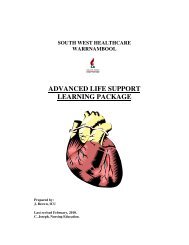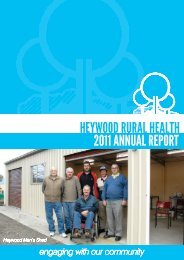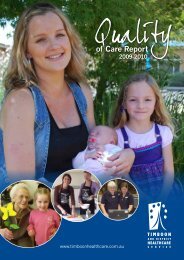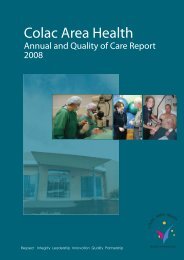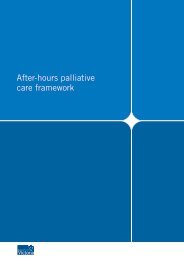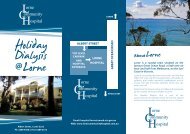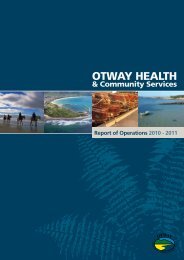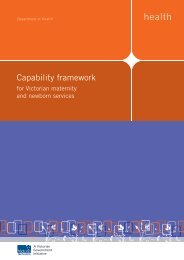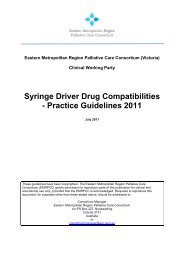Self Directed Learning Package - University of Queensland
Self Directed Learning Package - University of Queensland
Self Directed Learning Package - University of Queensland
- No tags were found...
Create successful ePaper yourself
Turn your PDF publications into a flip-book with our unique Google optimized e-Paper software.
91 • <strong>Self</strong> <strong>Directed</strong> <strong>Learning</strong> <strong>Package</strong> - Advanced Registered & Enrolled NurseThinking PointThink about how you would respond to Sarah’sinsistence that Alfred should go to hospital to have afeeding tube inserted.Hint: the Tube Feeding Decision Aid below may help.Tube Feeding Decision Aid 11Information to be provided to the resident andfamily should include:Common causes <strong>of</strong> eating and swallowing problemsin older persons:Technical considerations regarding placement anduse <strong>of</strong> PEG tubesPrinciples <strong>of</strong> substitute / proxy decision making (ifnot already discussed)The risks and benefits <strong>of</strong> tube feedingThe option <strong>of</strong> supportive / comfort care (e.g. handfeeding; responsive to resident’s requests regardingthe need for, or the refusal <strong>of</strong>, food and fluids); andSome considerations regarding futurediscontinuation <strong>of</strong> PEG tube (e.g. when and how<strong>of</strong>ten will the need for the PEG tube be reviewed;who can request a review / discontinuation and isthere a process for this.)Steps to decision making should include:Guiding the resident and their family through whatthey have learned about PEG tubes:How to apply this knowledge to the resident’spreferences, personal values, and clinical situation:What is the resident’s situation?What would the resident want?How is the decision affecting the family?What questions need answering before the resident/ or their family can make a fully informed decision?Who should decide about PEG placement?When should the PEG be disbanded; andWhat is the resident’s / or his / her family’s overallthoughts about the decision?Alfred is unconscious and you would not be surprised if he diesin the next two to three days.This time it is a careworker who approaches you, upset thatAlfred cannot drink. He says that he feels terrible if he forgets todrink any fluids during a busy eight hour shift so “how bad mustit be for Alfred being so dehydrated?”Thinking PointHow would you respond to the careworker?We suggest you use the “Understanding the DyingProcess” brochure (found in the PA Toolkit) t<strong>of</strong>acilitate discussions with careworkers just as youwould with family members.Alfred is still alive the next day and his GP suggests thatsubcutaneous (s/c) fluids (hypodermoclysis) may be needed.ActivityList the possible benefits and burdens that need tobe taken into account when considering whether toadminister s/c fluids?



